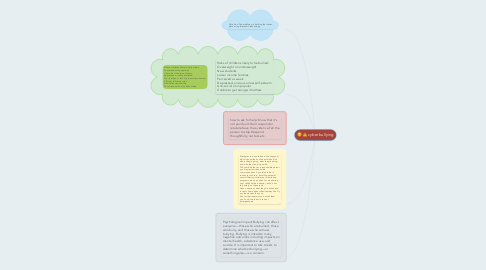cyberbullying
by manuella rivera f

1. Definition: Cyberbullying is bullying that takes place using electronic technology.
2. Risks of childrens likely to be bullied: Overweight or underweight New students Lower income families Perceived as weak Depressed, anxious or low self-esteem Anti-social or unpopular Unable to get along with others
2.1. Risks of children likely to bully others: Concerned with popularity Like to be in charge of others Aggressive or easily frustrated Family issues or lack of parental involvement Difficulty following rules View violence positively Have friends who also bully others
3. how to ask for help: Know that it’s not your fault.Don’t respond or retaliate.Save the evidence.Tell the person to stop.Respond thoughtfully, not fast..etc.
4. Strategies to be safe:Know the sites your kids visit and their online activities. Ask where they’re going, what they’re doing, and who they’re doing it with. Tell your kids that as a responsible parent you may review their online communications if you think there is reason for concern. Installing parental control filtering software or monitoring programs are one option for monitoring your child’s online behavior, but do not rely solely on these tools. Have a sense of what they do online and in texts. Learn about the sites they like. Try out the devices they use. Ask for their passwords, but tell them you’ll only use them in case of emergency.etc.
5. Psychological impact:Bullying can affect everyone—those who are bullied, those who bully, and those who witness bullying. Bullying is linked to many negative outcomes including impacts on mental health, substance use, and suicide. It is important to talk to kids to determine whether bullying—or something else—is a concern.


